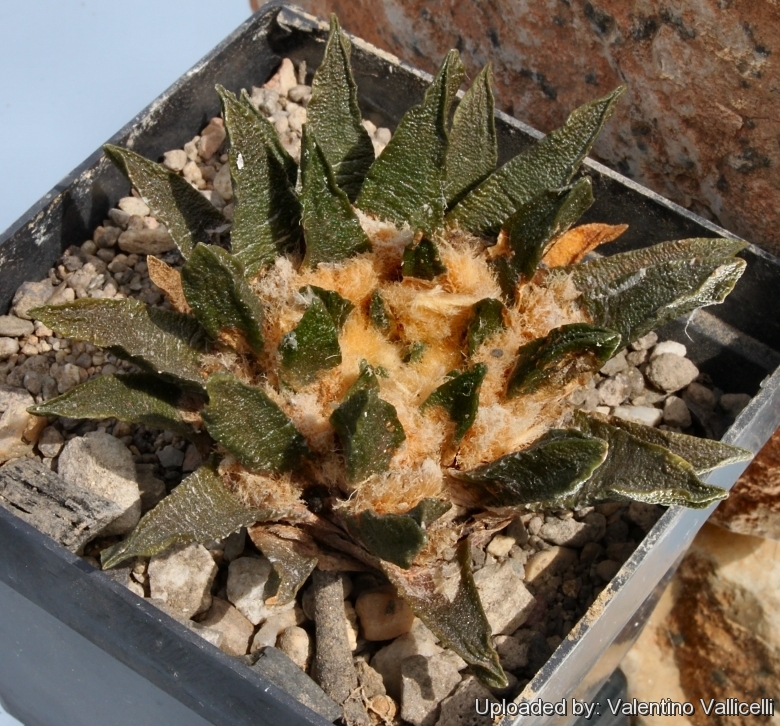
Ariocarpus scaphirostris Photo by: Valentino Vallicelli
Origin and Habitat: Rayones valley (sw Galeana, n Cuaxma, Casillas, nr Monterrey)
Habitat: Mexico (Nuevo Leon) in a very limited area within a single valley of a few hillsides. Grows in clayey soils on extremely arid low limestone hills at 950-1400 m of elevation.
Synonyms:
See all synonyms of Ariocarpus scaphirostris
back
Accepted name in llifle Database:Ariocarpus scaphirostris (Boed.) D.R.HuntCITES Cactaceae checklist. 1992Synonymy: 3
Cultivars
(1):
back
Common Names include:
ENGLISH: Nuevo Leon Living Rock Cactus, Living Rock
CHINESE (中文): 龍角牡丹
LITHUANIAN (Lietuvių): Pleištinis ariokarpas
RUSSIAN (Русский): Ариокарпус килевидный
SPANISH (Español): Orejas Desconejo, Orejitas, Orejas de Conejo
SWEDISH (Svenska): Stävmyrkottskaktus
UKRAINIAN (Українська): Аріокарпус килевидний
Description: Ariocarpus scapharostris is a slow-growing grey-green, geophytic cactus rising barely above ground level.
Stem: Smaller solitary, subglobose or globose, more or less rounded on top, 3-6 cm in diameter and 2-6 cm tall (occasionally up to 9-15 cm Ø in cultivated plants).
Tubercles: Few divergent, erect spineless , not crowded or basally compressed, bluntly pointed at the apices, flattened and smooth adaxially, fissured, slightly incurved, 1,5-4 cm long, 5-8 mm broad, at least twice as long as wide, grey wool between the tubercles.
Roots: Thick underground carrot-like root.
Flowers: Diurnal, self-fertile, bright dark purple , up to 4 cm.
Blooming season: Flowers in the Autumn, it flowers and fruits profusely.
Fruit: Greenish, 9-15 mm long 4-8 mm in diameter.
Remarks: All of the Ariocarpus seedlings are spiny and quite different from adult specimens, though the spines are feather-like.
Subspecies, varieties, forms and cultivars of plants belonging to the Ariocarpus scapharostris group
Notes: This specie has been described in 1930 with the name Ariocarpus scapharostrusSN|13521]]SN|2153]], but Hunt proposed to change the name in Ariocarpus scaphirostrisSN|2153]]SN|13521]] which is the correct spelling.
Bibliography: Major references and further lectures
1) Edward Anderson “The Cactus family” Timber Press, Incorporated, 2001
2) James Cullen, Sabina G. Knees, H. Suzanne Cubey "The European Garden Flora Flowering Plants: A Manual for the Identification of Plants Cultivated in Europe, Both Out-of-Doors and Under Glass" Cambridge University Press, 11/Aug/2011
3) David R Hunt; Nigel P Taylor; Graham Charles; International Cactaceae Systematics Group. "The New Cactus Lexicon" dh books, 2006
4) Urs Eggli, Leonard E. Newton: “Etymological Dictionary of Succulent Plant Names” Springer, Berlin/Heidelberg 2010
5) N. L. Britton, J. N. Rose: “The Cactaceae. Descriptions and Illustrations of Plants of the Cactus Family.” Volume III, The Carnegie Institution of Washington, Washington 1922
6) D. Hunt. "CITES Cactaceae checklist. (CITES Cactus L)" 1992
7) E. F. Anderson and W. A. Fitz Maurice "Ariocarpus revisited." Haseltonia 5: 1-20. 1997).
8) Anderson, E. F. "Ariocarpus: Some reminiscences." Cart. Succ. J. (US) 71:180-190, 1999)
9) Stuart Max Walters “The European garden flora. 3.[Angiospermae], Dicotyledons. [Casuarinaceae to Aristolochiaceae]” Cambridge University Press, 1989
10) E. F. Anderson. Amer. J. Bot. 51:149 1964.
11) L. Benson. The cacti of the United States and Canada 1982.
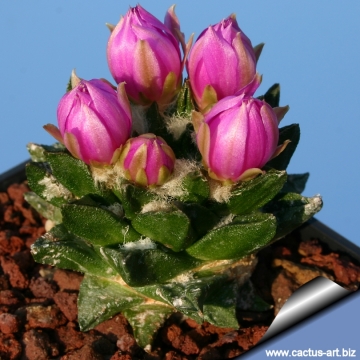 Ariocarpus scaphirostris Photo by: Cactus Art
Ariocarpus scaphirostris Photo by: Cactus Art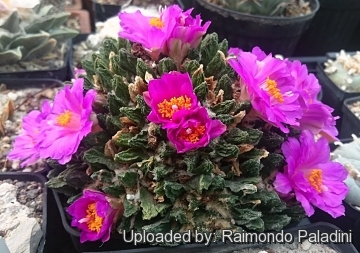 Ariocarpus scaphirostris Photo by: Raimondo Paladini
Ariocarpus scaphirostris Photo by: Raimondo Paladini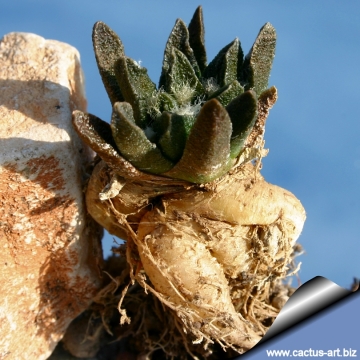 Ariocarpus scaphirostris Photo by: Cactus Art
Ariocarpus scaphirostris Photo by: Cactus Art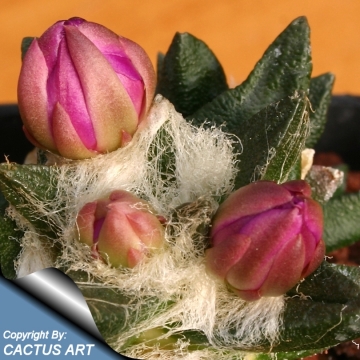 Ariocarpus scaphirostris Photo by: Cactus Art
Ariocarpus scaphirostris Photo by: Cactus Art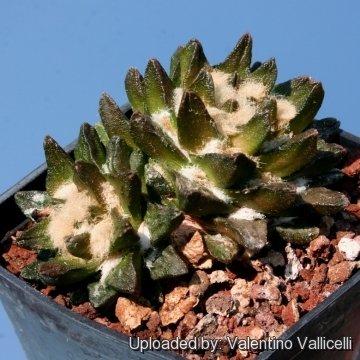 - Probably the rarest and more difficult species in cultivation . Photo by: Valentino Vallicelli
- Probably the rarest and more difficult species in cultivation . Photo by: Valentino Vallicelli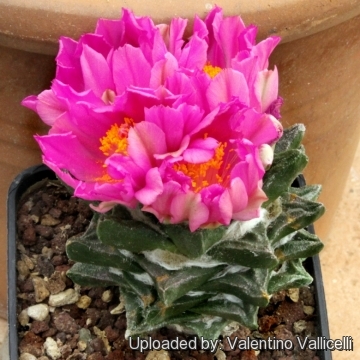 Ariocarpus scaphirostris Photo by: Valentino Vallicelli
Ariocarpus scaphirostris Photo by: Valentino Vallicelli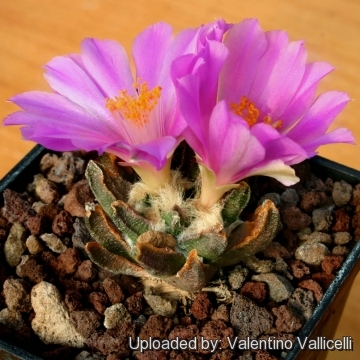 Ariocarpus scaphirostris Photo by: Valentino Vallicelli
Ariocarpus scaphirostris Photo by: Valentino Vallicelli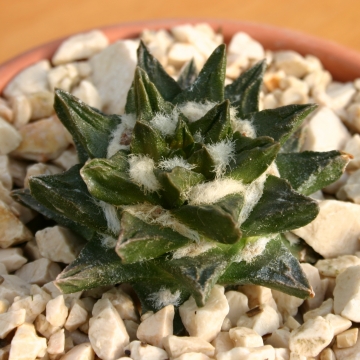 Ariocarpus scaphirostris Photo by: Cactus Art
Ariocarpus scaphirostris Photo by: Cactus ArtCultivation and Propagation: Plants are slow growing and the flowers are quite rare, it may start to bloom at about 2.5 cm diameter. It is one of the more difficult Ariocarpus in cultivation, often rots, especially the old plant. The seedlings are often grafted to increase growth speed, and flowers can then be expected within 2-3 years from sowing. It requires a hot sunny position. Eventually, as they become mature, they reach a maximum size of 6 to 10 cm. However, old plants become senile and have a tendency to succumb to disease and a weak root system. At this stage, as is well known, they die suddenly. So, after they reach 5 cm in diameter grow them slowly, and adopt a new repotting period, using intervals of every 2 - 3 years. Additionally grow them under drier conditions or with stronger sunlight. Plants are often grafted to accelerate growth, as they would generally take at least a decade to reach maturity on their own. But the grafted plants are typically rather tall- growing, compared with plants on their own roots, that are usually flatter to the ground. A. scapharostrus starts blooming at the age of 8-12 years (2,2,5 cm in diameter).
Propagation: By seeds, remembering that seedlings dislike strong light and dry conditions, and need to be repotted frequently.
Your Photos
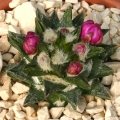
by Valentino Vallicelli

by Cactus Art
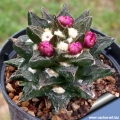
by Cactus Art
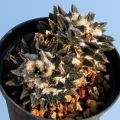
by Cactus Art






















